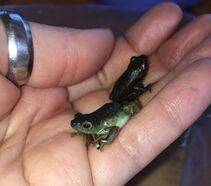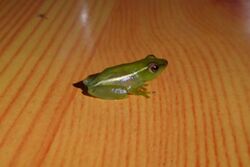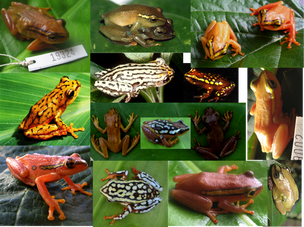 Hyperolius cf. pusillus
Hyperolius cf. pusillus The first step of describing a new species is figuring out what it ISN'T. Figuring out what it isn't requires us to compare this frog to other similar frogs to determine if we can rule them out. In modern herpetology, we employ a wide variety of techniques to characterize a species and sample a number of individuals in order to understand within-species variation in relation to between-species variation. We take morphological measurements of every aspect of these little frogs, we document coloration and variation (some species are hyper-variable even within a single clutch of eggs), we record calls, we sample DNA, and we document habitat type and distribution. Finally, we take all of this information into account and compare to all other similar species - noting ways in which they are similar and ways in which the differ.
 Hyperolius howelli
Hyperolius howelli  Variation within Hyperolius substriatus.
Variation within Hyperolius substriatus. -Lucinda Lawson
 RSS Feed
RSS Feed